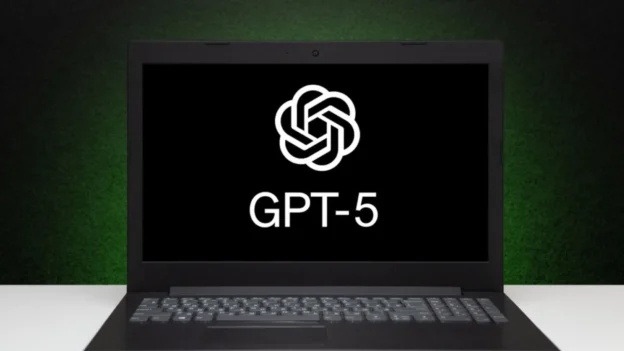OpenAI presents GPT-5 as a unified system with a fast base model, a thinking mode for advanced reasoning, and a real-time router that chooses the path according to complexity and expressed intent.
If the user asks “think this through”, the system activates extended reasoning. When usage limits are reached, a lighter version kicks in to maintain continuity. The company plans to unify these layers into a single model.
GPT-5 decides how to think
In addition to general enhancement, GPT-5 aims strongly at development. It generates web sites, applications and games from instruction and better understands layout decisions such as spacing, typography and use of white space. It also raises the bar on debugging large repositories, which favors multi-branch flows and testing.
For product teams this means going from sketch to working prototype in less time.
GPT-5 is the most powerful model to date. Source: OpenAI
Useful answers with more context
On the other hand, the model writes with more control of tone and structure. It manages ambiguous texts better and maintains coherence in long documents. In healthcare, it offers more precise and secure answers with follow-up questions to guide consultations. It does not replace medical professionals and is presented as a support to understand results, prepare doubts and weigh options.
GPT-5 also records progress in public benchmarks and internal tests. It reports 94.6% in AIME 2025 without tools, 74.9% in SWE-bench Verified and 84.2% in MMMU. In health it scores 46.2 % in HealthBench Hard and in expert reasoning it reaches 88.4 % in GPQA without tools using GPT-5 Pro. With web search and thinking mode the factual error rate drops compared to previous models and the company reports a marked reduction of hallucinations in LongFact and FActScore tests.
For dual-use requests, training shifts from a focus on rejections to “safe completions”. The goal is to give the most useful response within safe limits, explain the reasons for a rejection, and propose alternatives. In tests designed to elicit complacency the model reduces flattery and communicates boundaries more clearly when the task is impossible or lacks key data.
Four personalities and better instructions
The assistant incorporates a preview of predefined personalities that adjust the interaction style: Cynical, Robot, Listener and Nerd. These options can be activated in text chat and will come in Voice. The model better follows personalized instructions, which simplifies setting the tone and length needed for each user.
GPT-5 is now the default model in ChatGPT for Free Plus and Pro accounts with usage volume differences. Team customers also receive it and Enterprise and Edu editions will be activated in the short term. Those who need more depth can choose “GPT-5 Thinking” or upgrade to GPT-5 Pro for more extensive reasoning. When exhausting the limits in Free the system switches to GPT-5 mini to maintain the service.
In complex knowledge work GPT-5 measures better against human experts in various domains such as law, logistics, sales and engineering. For enterprises this translates into more end-to-end deliverables with orchestration of tools and less manual intervention.
Source: OpenAI
Photo: shutterstock

